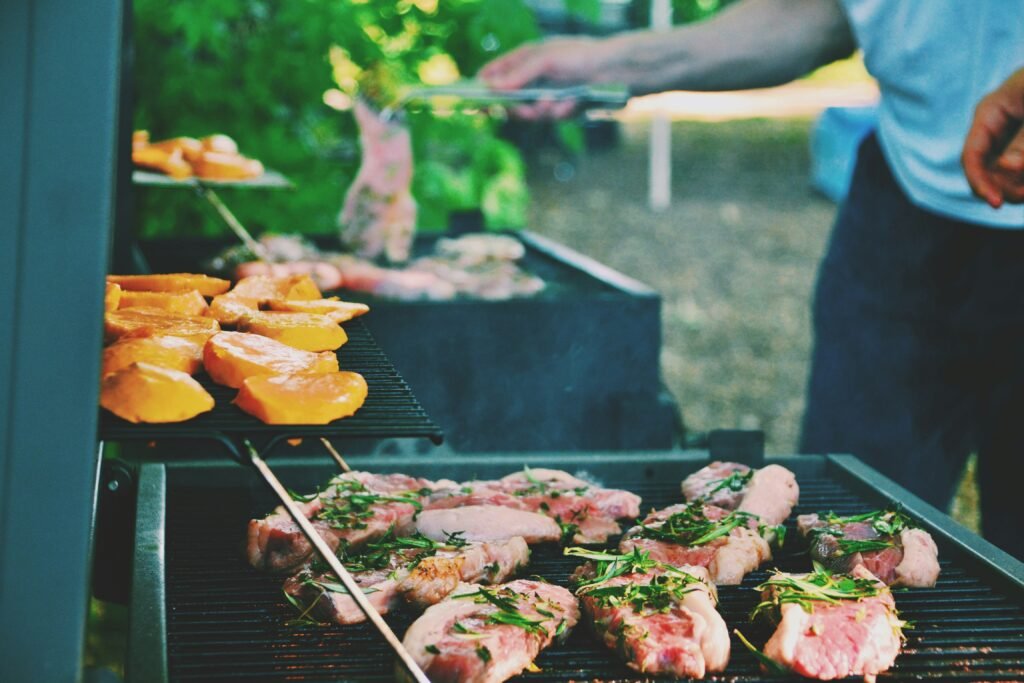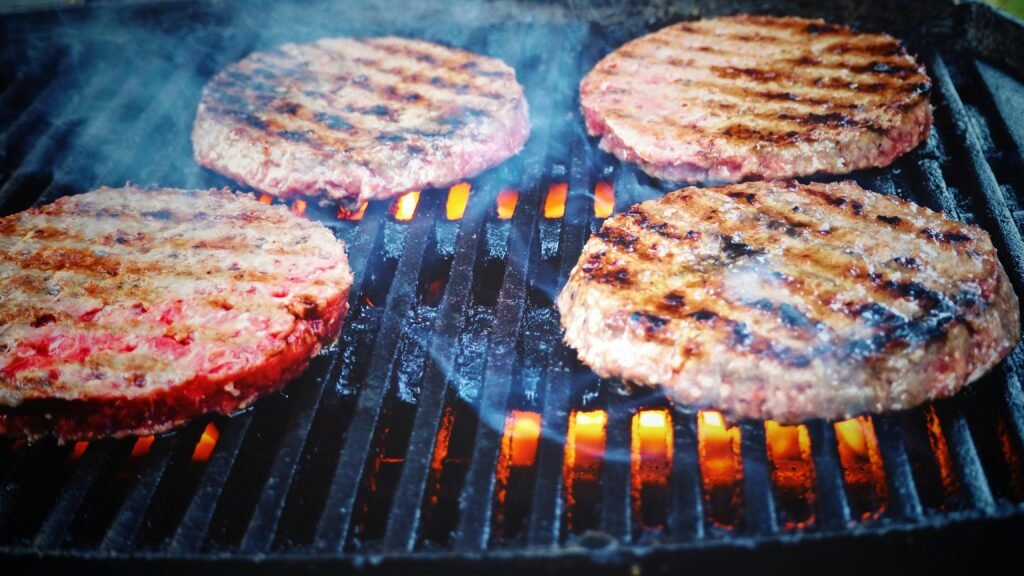Are you ready to embark on a culinary adventure that involves smoky aromas wafting through the air and tender pork melting in your mouth? We certainly are. There’s something magical about the process of smoking pork, a technique that transforms a simple piece of meat into a flavorful delight. Whether you’re a seasoned backyard smoker or a curious first-timer, we believe this smoked pork recipe will elevate your cooking game. Let’s journey through each smoky step together with a touch of humor and plenty of delectable details.

This image is property of images.unsplash.com.
Understanding the Basics: What is Smoked Pork?
Before we get our hands messy with spices and marinades, let’s understand the basics. Smoked pork is essentially pork that has been cooked slowly over low heat while being infused with the smoke from burning wood chips or chunks. This process isn’t just about cooking; it’s about imbuing the meat with unique flavors that only smoke can provide.
The Art of Smoking
Smoking meat is as much an art as it is a science. We’ve all tried to impress guests with our food, only to have it turn into a well-intentioned disaster. But don’t worry, once we get the hang of it, smoking becomes a therapeutic exercise, blending patience and skill in the pursuit of perfect pork. From selecting the right wood to mastering the temperature, we’re here to make sure everything falls into place seamlessly.
Choosing the Right Cut
When it comes to smoked pork, the cut of meat is the canvas upon which we’ll paint our masterpiece. Popular choices include pork shoulder, pork butt, and ribs. Each cut offers a different texture and flavor, making them suitable for different types of smoked dishes. Here’s a quick guide:
| Cut of Pork | Description |
|---|---|
| Pork Shoulder | Also known as Boston butt, this cut is ideal for pulled pork. |
| Pork Butt | Despite its name, it comes from the shoulder area. Tender! |
| Ribs | Perfect for those tender, fall-off-the-bone experiences. |
Setting the Stage: Preparing Your Equipment
Before we can smoke the pork, we need to ensure that our smoker is ready for action. The world of smokers varied–from electric to charcoal to propane. Let us walk through the essentials together.
Types of Smokers
Choosing the right smoker depends on your lifestyle and how much you’re willing to tinker with the temperature.
- Charcoal Smoker: Offers authentic smoky flavor; requires regular babysitting.
- Electric Smoker: Set it and forget it; ideal for beginners.
- Propane Smoker: Consistent heat, but you might miss a bit of the traditional smoking charm.
We often choose based on how involved we want to be in the process. Feeling like a fire-tending pro? Go for charcoal. Want an easy life? Electric might be your jam. Craving a balance? Propane’s got you covered.
Gathering Supplies
Once our smoker is sorted, we need to gather everything else. It feels like preparing for a camping trip: if you forget something, the fun is stalled until you improvise. Here’s a checklist to make sure we’re ready before the pork hits the smoker:
- Wood chips or chunks
- Thermometer (because guessing is never as effective as knowing)
- Marinade ingredients (we’ll get to specifics shortly)
- Aluminum foil (a magic wrap for retaining moisture)
- A brush for basting
The Flavor Foundation: Preparing the Pork
Now that we’re equipped, it’s time for the hands-on part: preparing the pork. This is where we let our personalities shine through a mix of spices and sauces.
Creating the Rub
The rub is the heart of our smoked pork. It’s where we infuse the flavors we love. As a cooperative ensemble, we’ve merged our favorite ingredients to form a rub that’s both balanced and bursting with taste:
- Brown Sugar: The foundation, offering sweetness and caramelization.
- Paprika: For depth and a hint of heat.
- Salt and Pepper: The always reliable duo.
- Garlic Powder: Adds earthy, savory notes.
- Cayenne Pepper: Just enough to keep things interesting.
We blend these in a bowl, making sure every grain of sugar and spice is well-mixed. If only diets could be similarly blended.
Marinating the Meat
With the rub ready, we turn our attention to the star: the pork. First, we pat the meat dry with paper towels to help the rub stick. Then, we lovingly coat the pork, massaging the mixture into every nook and cranny.
This is the part where we let it rest. Preferably overnight in the fridge––it gives the flavors ample time to mingle with the meat. We cover it with plastic wrap, and admire our handiwork briefly, imagining the feast waiting to happen.
Bringing the Heat: Smoking the Pork
It’s the day of the big smoke. We rise early, fueled by anticipation and possibly caffeine. The time has come to bring our carefully seasoned pork to its smoky stage.
Choosing the Right Wood
Choosing wood is like picking out a wine. Different types impart distinct flavors, heightened by the cut of pork we’re smoking:
- Applewood: Light and fruity; plays well with pork’s natural sweetness.
- Hickory: Bold and smoky; for those who like robust flavors.
- Maple and Cherry: Sweet, with a hint of mildness.
Our personal favorite? Mixing applewood and hickory for a balanced, aromatic experience. It’s a little like jazz—sometimes unexpected combos hit all the right notes.
The Smoking Process
Time to get down to business. We preheat our smoker to 225°F (around 107°C), ensuring a steady path to perfectly smoked pork. It’s a slow process, but like all good art, it cannot be rushed.
We place the pork in the smoker, fat side up, allowing the juices to marinate the meat as it melts down. From here, we add wood chips every hour or so to maintain the smoky flavor—more if we crave intensity.
The pork requires 60 to 90 minutes of smoking per pound, so if patience isn’t something readily available, perhaps now is a good time to cultivate it.
Monitoring the Temperature
If we want to proceed from actor to director of this meat-centric production, a thermometer is our best friend. Prescribing the internal temperature for pork is crucial, usually around 195°F (90°C) for pull-apart tenderness. Don’t rely on guesswork; we’re not baking cookies.

This image is property of images.unsplash.com.
The Final Touch: Resting and Serving
When the pork reaches perfection, it’s time for the grand finale. However, unlike dinner guests, it benefits greatly from a rest.
Resting the Pork
Once removed from the smoker, the pork should rest for at least 30 minutes. This allows juices to redistribute throughout the meat, locking in flavor and moisture. Some say patience is a virtue—those people are right, especially in this case.
We tent the pork loosely with aluminum foil during this stage to retain heat. While it rests, we prepare sides or just stare in admiration.
Serving Suggestions
We unwrap the foil like an artisanal gift, eager to taste the tender results. Whether it’s pulled pork sandwiches, tacos, or just a plate with coleslaw, the possibilities are countless. Faced with divine pork, even minimalist salad becomes a trusted sidekick.
Here’s a quick table to help us choose our accompaniments wisely:
| Accompaniment | Perfect Pairing Reason |
|---|---|
| Coleslaw | Adds crunch and tang to balance flavors. |
| Potato Salad | Creamy textures complement the savory pork. |
| Grilled Vegetables | Smoky flavors meet healthy, vibrant colors. |
| Baked Beans | Rich, sweet, and a favorite classic combo. |
Common Pitfalls and Pro Tips
We’d be remiss if we didn’t touch on the common pitfalls many face when smoking pork for the first time. Avoid the following to ensure our journey ends in triumph rather than tragedy.
Pitfalls to Avoid
- Rushing the Process: Slow and steady wins this flavorful race. Don’t crank the heat for the sake of shaving off a few hours.
- Lack of Moisture: Spraying apple juice or some vinegar on the meat during smoking can maintain moisture levels.
- Over-smoking: While it’s tempting to keep adding wood, too much might lead to bitterness. Balance is key.
Pro Tips
- Test for Doneness: Even with a thermometer, sometimes texture tells the tale. The pork should flop slightly at edges, and a fork should twist easily into its fibers.
- Experiment with Rubs and Marinades: Don’t hesitate to add personal flair—cumin, mustard powder, or ginger can transform the rub.
- Bear in Mind Altitude: High elevations might affect cooking times, so check internal temperature more frequently.

This image is property of images.unsplash.com.
Conclusion: From Our Smoker to Your Table
There we have it—a journey through the smoky, delectable process of creating a smoked pork masterpiece. We’ve blended spices, fired up smokers, and patiently awaited the glorious main event. Together, we’ve molded raw pork into something truly magnificent.
So, when we’re all set with our smoker and our pork is resting triumphantly, we’re reminded of the joy in creating something special with our own hands (or perhaps taking a little too much credit from the smoker).
At the end of it all, as the last tender morsel is savored and compliments exchange hands, we know that this isn’t just about pork. It’s about camaraderie, sharing, and the simple pleasure of a well-smoked meal.
Now, how about a toast to smoked adventures, laughter, and delicious outcomes? We hope our smoked pork recipe finds a cherished spot at your table.



